For most gun control advocates, the one thing they will absolutely never want to touch is the hunting abilities of the American population. Nevermind that’s not even the point of the second amendment, for some reason hunting is the “third rail” of gun control. The problem for them is that hunting rifles are continuously evolving, and the next generation of hunters have already picked their weapons…
In the earliest days of hunting in the United States citizens used the exact same style firearm for everything, be it military service, home defense or hunting. The most popular model was the British Land Pattern Musket or “Brown Bess” that was mass produced for military use and also used for trade. But also used in the colonies were one-off muskets built by local gunsmiths who manufactured their own firearms for civilian sale. These muskets were indistinguishable from military firearms in terms of operation or firepower, and the only real difference was the bayonet lug on the military version.
The wide availability of these early firearms made them popular for hunting as well, as they removed the requirement for hunters to be strong enough to nock and draw an arrow in order to harvest wildlife. This also enabled hunters to stalk their prey more effectively, since they did not have to make any big obvious movements before taking the shot.
The next great leap forward came in the form of rifling. While previous firearms were simply long straight tubes, rifling created spiral cuts in the barrel to twist the bullet and spin it like a football. This greatly improved accuracy, and made long distance shooting possible.
After the Civil War, the wide availability of rifled muskets combined with the better understood mechanics of rifling made it possible for a rifle to be in every person’s hands who wanted one. The benefits were obvious — improved accuracy meant the ability to harvest an animal from a greater distance, and the ability to put rounds more accurately on target also meant that the process was quicker and more humane for the animal.
In short, rifling made hunting better for all parties involved — including the animal.
For the next hundred years, every time a major advancement was made to the standard infantry weapon the hunting community was right there adopting it. This was partially due to the great new features, but also thanks to the millions of men and women in the armed forces who were trained with these weapons and wanted to keep hunting with a familiar weapon when their enlistment ended.
When the U.S. Army moved to the Springfield 1903 rifle, the hunters adopted it as well. Self contained ammunition and the ability to shorten the stock to make the gun lighter were major improvements over previous models.
The M1 Garand was the popular hunting rifle in its day, thanks in no small part to the U.S. Government selling off their surplus stock after the wars to the civilian population. The semi-automatic action made it much easier to make a follow-up shot on animals, and increase the chances of not walking out of the woods empty handed. Its also handy in controlling herds of animals, like wild boars.
The latest generation of hunters grew up with the M-16 and its variants, and there’s no wonder that it is now becoming one of the most popular hunting platforms in the United States. Its an ingeniously modular design that allows shooters to customize the rifle to fit their body and their hunting style, changing everything from the length of pull for the stock to the caliber being used.
The AR-15 (the civilian M-16) is lighter, more accurate, and more highly customizable than anything on the market ever before. And the end result of that customization is my current hunting rifle.
The adjustable stock gives me the ability to change the shape of my rifle to suit my firing position. The silencer lets me listen to the world around me, including if there are any humans around (so I don’t shoot in their direction) and find the prey, all while keeping my perfect pitch in tact. The flashlight lets me hunt later into the night, when the “pest” animals are typically out and most vulnerable. And the high capacity magazine lets me engage more vermin in a short period of time.
The AR-15 is, in fact, the perfect hunting rifle. And with more and more people buying these rifles, it’s quickly becoming the most popular hunting rifle in the United States (and therefore the world).
And that’s what confuses me. Every time gun control advocates talk about restricting these “non-sporting” firearms, it seems like none of them have ever checked into what kinds of firearms actually are actually being used for sport. Mossberg might have it right — the AR-15 really is the “modern” rifle. Now if only everyone else would realize that….

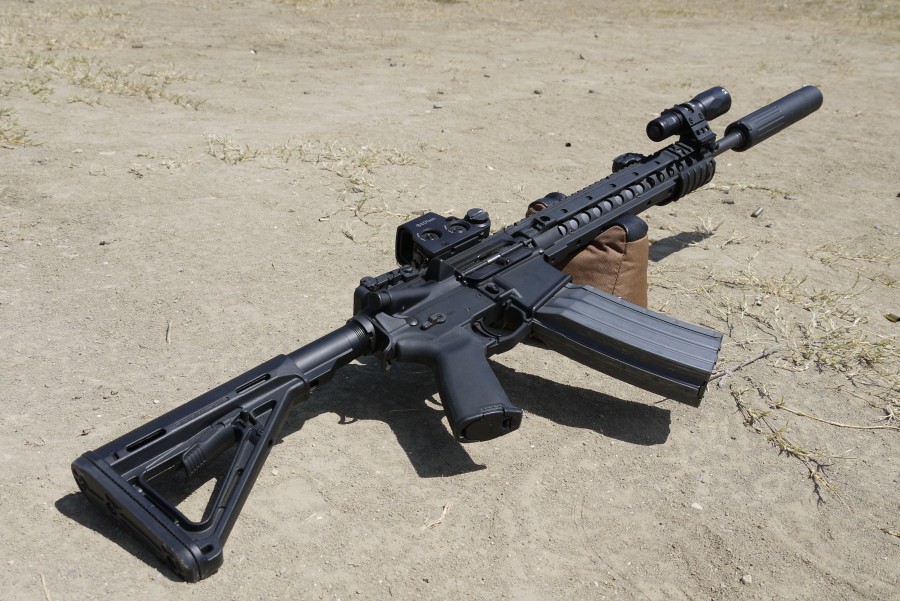
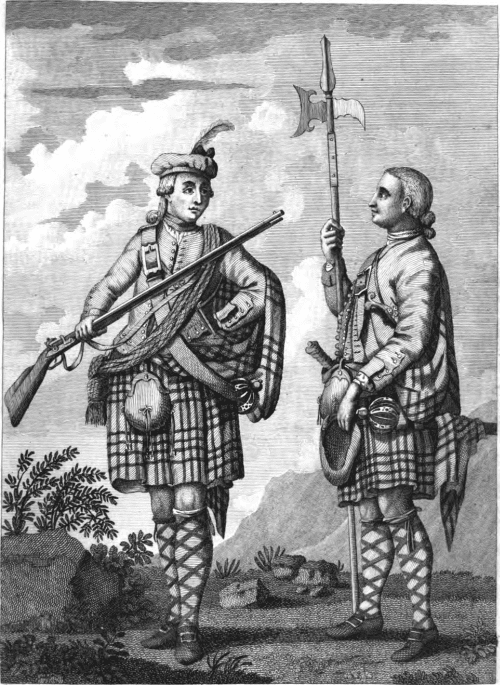

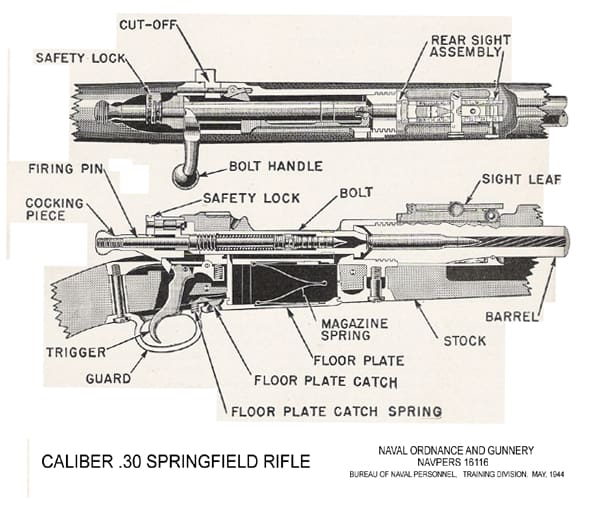
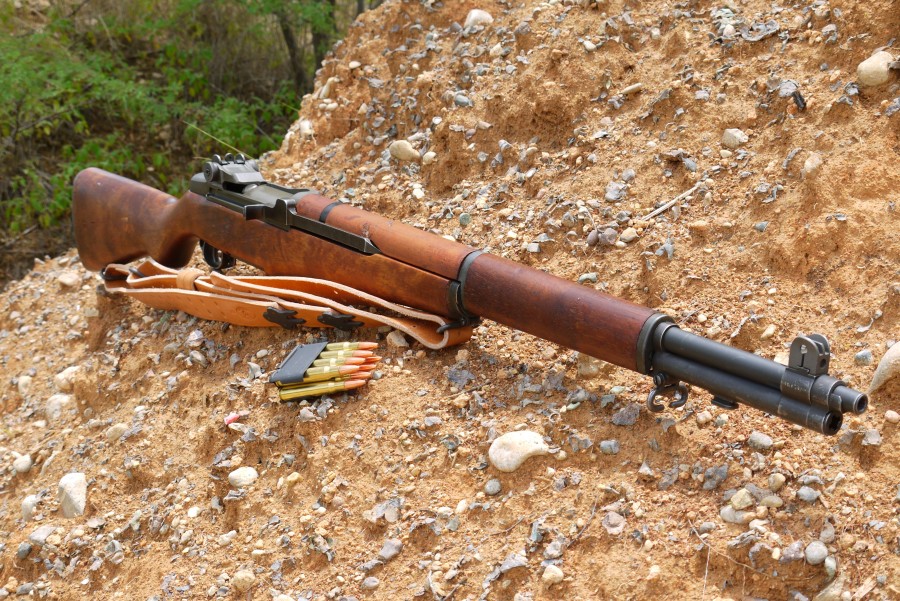
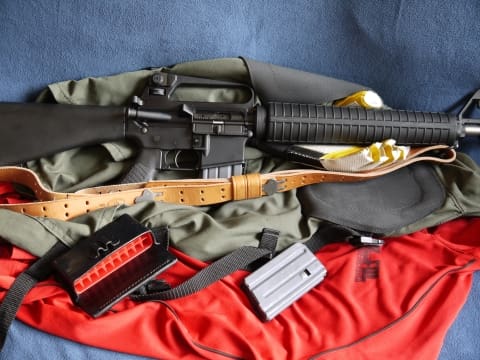

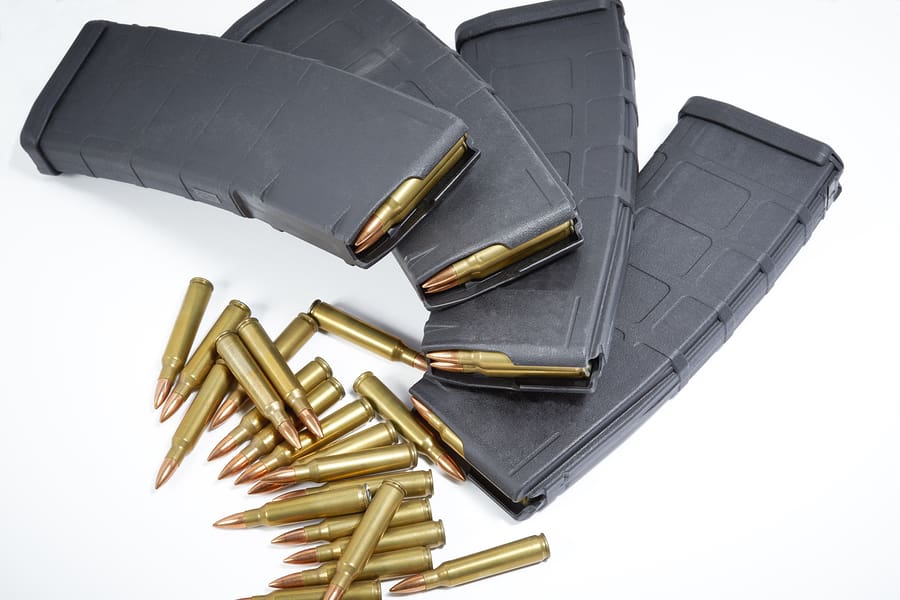


You can’t hunt with an AR-15. All you can do with an AR-15 is kill a lot of people.
LA LA LA LA LA LA LA LA LA LA …
Yeah! And we know we’re right because the Brady’s said so, so there!
Somewhere, Jim Zumbo is reading this and breaking into a cold sweat…
The simple solution is to schedule a Brady Bunch outing in Texas or AZ and turn them loose in the middle of feral hog territory. They get 3 choices: they can run, they can pick up a Remington 710 with 4+1 capacity, or they can have an AR-15 with a normal 30 round magazine. Any bets on what the majority choose when faced with the prospect of a bunch of javelinas charging them down?
DISCLAIMER: This scenario assumes the Brady ilk are capable of making decisions under real-world situations with some degree of common sense and reasoning capabilities. Too much to ask?
I suspect they will soil themselves in outrage just looking at the rifles.
Turning a bunch of unarmed gungrabbers loose among a gaggle of angry feral hogs is a clear case of cruelty to animals.
We need common sense gungrabber control. For the piglets.
It’s not cruel – it’s feeding. (Or, maybe, baiting – which wouldn’t be very sporting.)
LMAO!!! Oh geez glad I have a protective cover on my iPhone, it is covered in coffee!!!
I think we needs common sense beverage control. Snanchim kills innocent electronics with his drinks way too often. Way to ruin for the rest of us… jerk.
now that shit was funny, kelly in ga.
I understand your broader point and I agree but to say it’s the perfect hunting rifle is kind of a big statement. Perfect for hunting what?
Would it be good for Elk or Brown Bear? What’s the most powerful caliber you can get for the AR platform? Don’t you pay a weight penalty for all that modularity, rails, grips, big magazine filled with ammo, etc?
I’m trying not to be a curmudgeon but I do believe it’s possible for the design of hunting rifles for at least some hunting applications to sort of mature in one direction. While it’s true that advances from the military side have improved the hunting rifle in the past it doesn’t mean that every military advancement is necessarily applicable to hunting. There are separate design criteria and you would think the best for each would diverge.
Plus you can get super accurate bolt action rifles in hugely powerful calibers. They are simple to maintain and operate and they put you more in the frame of mind of making one good shot rather than having the ability to spray the game with lead.
I know you are making the point of gun control and I agree with that point but I feel that you have stretched a bit in declaring the AR the “perfect hunting rifle”.
You can find AR uppers in .458 SOCOM and .50 Beowolf, as well as .308 and .338 Lapua…
It appears those bigger cals like 338 and 50 are only single shot. Pretty much a black bolt-action at that point. But, maybe there are some semi-automatic versions.
My hog rifle is an AR chambered in 6.8 SPC which is good enough to take down any hog here in California. I have a shoulder injury that makes it impossible for me to take the recoil from most bolt action rifles.
There are so many advantages to the AR platform for hunting:
Quicker follow up shots for packs of hogs
Sub MOA accuracy can be easily achieved
Sub 8lb carry weight including scope is possible
Calibers from .223, 6.5, 6.8, .308 and .300blk for suppressed (if you live in a free state)
.50 Beowolf is semi auto, their is a .338 Lapua semi auto called “bad news” but on doing some google fu, its a stand alone rifle.
There is also a bolt action .50 BMG upper available for the AR platform, albeit $1200.
Edit: late on the .50 comment. With a caliber that large, what game requires more than 1 shot in the hands of a capable shooter?
Thats the great thing about the AR. For most calibers the standard AR-15 lower with a simple swap of the upper you can go from 5.56 to 30 cal varients, 6.8, .450 bushmaster, 458 SOCOM, and I am sure many others. Once you have a good lower any upper can be purchased without having to go through a licensed gun dealer. One gun for many situations.
Truth is, ther e is no perfect one size fits all hunting rifle. A careful stalk and welll placed shot makes the lowly 30-30 an elk killer, but I doubt anyone would consider the old timer an elk rifle. This is one of the great faults with the anti’s claim “Why do you need more than one gun?” The answer plain and simple is that there is no one does all. Having killed several does with my AR-15 and more than a few with the likes of 308 and 30-06, the former is a far better close range woods rifle thean the latter. Why? because the 223 simply doesn’t obliterate the offside of the animal rendering otherwise good shoulder meat into blood pudding. And the advantage of quick follow-up shots, is not nearly so important as the ability of the rifle to reload itself while the muzzle report covers the sounds of the action working, leaving other deer in the immediate area unaware of the location of hunter. This means I can take my legal limit of two does per day when the opportunity exists. And yes, I’ve done this on several occasions.
The prejudice which exists amoung hunters over the AR continues to amaze me. I wonder if the same prejudices would raise their head if the rifle we were disscussing were the Remington Model 8 or the Winchester Model 1907 or 1910 It ceases to amaze me that people who would consider the a 44 Magnum a no questions asked hunting arm, refuse to consider the .223 AR-15 in the same light. As with the 44, it’s all about the bullet and bullet placement.
The one question I have is did you kill that deer with a single round and perhaps a single follow up shot or
something else.
NEMO arms makes a fully functional, semi-automatic, AR pattern rifle in .300 Winchester Magnum. That’ll efficiently put down any North American game animal. And it’s beautiful eye-candy too:
http://nemoarms.com/portfolio/omen-match-300-win-mag-ar/
This reminds me of the old line about how during the First World War, the Germans brought a hunting rifle, the Americans a target rifle, and the British a battle rifle.
I don’t know, I own all three (actually four, I have both a 1917 Enfield and a 1903 Springfield). I think they’re pretty evenly matched, though if I had to lug one through the trenches I would probably want the Springfield, just based on weight.
What did the Russians bring?
The best piece of exercise equipment going–and I say that as someone who owns and loves the Mosin-Nagant rifle.
The wild hog problem will do more to promote the use of AR variants for hunting than anything else. These pigs need big bullets and lots of hits to go down.
When did the typical AR platform have big bullets? It is uncommon to find a popular rifle outside of rimfire that fires a smaller round than a AR-15 (ya i know M1 carbine).
I have to agree with Nick on this. The AR by it’s nature is very customizable. There are many hunters who have not taken to the caliber wars and stihither with a 308. Sure a 30-06 or a 7mm are great but on average I would say most hunting shots are 300 yards or less, more like 200. Deer, and elk are fine for this and shot placement regardless of game is key.
Being able to double tap accurately onto a target will allow a humane kill which is something I think even a vegan can agree on.
Feral pigs are destructive so in that instance mowing them down is not a bad thing. But that is almost a different discussion.
Heck using the right bullet and if you are good bear can be taken with a 308 as well although I probably wouldn’t recommend it for most. I have seen videos of Inuit hunters using 22 caliber rifles on POlar bears, but then again their shooting skills and anatomy knowledge trumps just about everyone I know.
@Nick RF, are there any numbers available on types of rifles being sold? Idea is to corolate that to what Nick says. The fact is the AR platform is so popular that parts are hard to find and when you do see them you snatch them up because wait times suck!
Good point. People should think about keeping a set (or two) of the high wear parts on hand if they plan on shooting thousands of round through a AR-15 type even if it’s a high end brand. It’s a must have for full auto’s.
I also have that same SureFire 60 round clip on my personal M4. The 100 round is really too big for anything but target shooting or full auto operation. Is that a EOTech holographic sight ? I have a night vision capable one on mine. BTW nice gun.
SITTY ROUN WAT?
jes playin
Ok, I know your point here is that AR series rifles are an efficient hunting platform. That any hunting rifle will be effective for killing people just as any rifle effective for killing people will be effective for hunting (at least some animals).
However, I’ve always thought it’s wrong to allow the debate over gun rights to drift to hunting rights. As if hunting is the justification. It’s not the grounds I want to imply that the right should be dependent on.
The right, as laid out in Heller by the DC court of appeal is:
“To summarize, we conclude that the Second Amendment
protects an individual right to keep and bear arms. That right
existed prior to the formation of the new government under the
Constitution and was premised on the private use of arms for
activities such as hunting and self-defense, the latter being
understood as resistance to either private lawlessness or the
depredatio¬ns of a tyrannical government (or a threat from
abroad). In addition, the right to keep and bear arms had the
important and salutary civic purpose of helping to preserve the
citizen militia. The civic purpose was also a political expedient
for the Federalists in the First Congress as it served, in part, to
placate their Anti-federalist opponents. The individual right
facilitate¬d militia service by ensuring that citizens would not be
barred from keeping the arms they would need when called forth
for militia duty. Despite the importance of the Second
Amendment’s civic purpose, however, the activities it protects
are not limited to militia service, nor is an individual’s
enjoyment of the right contingent upon his or her continued or
intermittent enrollment in the militia.”
Gun rulings have referred to the right being to arms ‘in common use at the time’, I don’t want that term to be defined, as some have tried to, as weapons commonly available to the US citizenry based on limitations of current laws. I firmly believe the term ‘in common use at the time’ should be interpreted as individual weapons in common use by military infantry around the world as the equivalent of arms suitable for militia service. Or as the Soclitior General of the US put it in his oral arguments trying to defend the DC gun ban in Heller put it:
GENERAL CLEMENT: Well, Justice Scalia, I think our principal concern based on the parts of the court of appeals opinion that seemed to adopt a very categorical rule were with respect to machine guns, because I do think that it is difficult — I don’t want to foreclose the possibility of the Government, Federal Government making the argument some day — but I think it is more than a little difficult to say that the one arm that’s not protected by the Second Amendment is that which is the standard issue armament for the National Guard, and that’s what the machine gun is.
CHIEF JUSTICE ROBERTS: But this law didn’t involve a restriction on machine guns. It involved an absolute ban. It involved an absolute carry prohibition. Why would you think that the opinion striking down an absolute ban would also apply to a narrow one — narrower one directed solely to machine guns?
GENERAL CLEMENT: I think, Mr. Chief Justice, why one might worry about that is one might read the language of page 53a of the opinion as reproduced in the petition appendix that says once it is an arm, then it is not open to the District to ban it. Now, it seems to me that the District is not strictly a complete ban because it exempts pre-1976 handguns. The Federal ban on machine guns is not, strictly speaking, a ban, because it exempts pre – pre-law machine guns, and there is something like 160,000 of those.
JUSTICE SCALIA: But that passage doesn’t mean once it’s an arm in the dictionary definition of arms. Once it’s an arm in the specialized sense that the opinion referred to it, which is — which is the type of a weapon that was used in militia, and it is -it is nowadays commonly held.
GENERAL CLEMENT: Well –
JUSTICE SCALIA: If you read it that way, I don’t see why you have a problem.
GENERAL CLEMENT: Well, I — I hope that you read it that way. But I would also say that I think that whatever the definition that the lower court opinion employed, I do think it’s going to be difficult over time to sustain the notion — I mean, the Court of Appeals also talked about lineal descendants. And it does seem to me that, you know, just as this Court would apply the Fourth Amendment to something like heat imagery, I don’t see why this Court wouldn’t allow the Second Amendment to have the same kind of scope, and then I do think that reasonably machine guns come within the term “arms.”
Which is exactly why I’m trying to stitch the two back together. Hunting rifles aren’t a separate category, its all one and the same.
“And with more and more people buying these rifles, it’s quickly becoming the most popular hunting rifle in the United States (and therefore the world).”
How could you possibly know that the ARs being bought are for hunting? Do you even know if AR sales are outpacing all other traditional hunting rifles for any use?
Your goal is good but does that mean you can just say whatever to support your point? I still expect intellectual honesty, even from those of who I support. It’s actually more important because I don’t want antis tearing apart your arguments the way we do theirs.
The discussion on the suitability of the AR platform for hunting is most interesting. But do I detect a warning to the antigun crowd? A warning that American hunters are numerous, well armed, and constitute the invader’s nightmare that Admiral Yamamoto envisioned, about a rifle behind every blade of grass.
Invaders? What invaders, the antigunnies will scoff. Simple – gun control fever is a largely urban borne disease. Those infected with it regard the vast American hinterland as hostile territory to be invaded and subdued to the dominant urban liberal culture. I believe their president referred to the inhabitants of this huge heartland region as “bitter clingers”.
And is that why United Nations officials in charge of pushing globalized gun confiscation cast a cold eye on America & refer to any hunting rifle as a “medium range sniper weapon” and call for their seizure by the authorities?
Anyway, that’s my take. For the record I am a Garand/Mauser/Mosin-Nagant fan. I like my Weatherby .300 Mag, too.
for some reason hunting is the “third rail” of gun control.
I think the reason is pretty obvious. The antis have long, and with some success, relied upon a “divide and conquer” approach. Separate the mall ninjas from the Fudds, and go after the mall ninjas first.
The more the ninjas and the Fudds use th same toys the harder the uphill climb for the antis.
The AR needs a marketing campaign to improve its image. It is not an “assault weapon, ” it is a modular rifle, adaptable to any game a hunter wants to hunt, whether that is deer, elk, or varmints. The LEGO rifle as it were. You can mix and match parts to your hearts content.
Nick:
It all depends on the game you shoot. A semi-automatic rifle works well for a pack of ferral hogs although I think you might be a bit optimistic that a 5.56 is a good round to shoot one with. I would want an M-1A or AR-10 if I had to face down a member of the Grizzly family. However, when you go after a member of the deer clan it’s typically one and done. If you hit your target a deer, elk or antelope and it doesn’t go down an ungulate can move much faster than you can get off a second accurate shot. One of the cardinal sins of hunting is letting rounds fly when there is significant chance that you wll miss your target.
A 62 grain .223 hollow point round will do quite a bit of damage on impact. It leaves the muzzle around 3000 fps. Since he owns a silencer I assume his AR is also full auto. It would not be hard to put several rounds in on one trigger pull.
BTW .. I hunt paper and explosive targets though 😉
Since he owns a silencer I assume his AR is also full auto.
lol wut?
A silencer/suppressor requires similar paperwork to owning a full auto firearm. I’m pretty sure you don’t have either.
“A silencer/suppressor requires similar paperwork to owning a full auto firearm.”
Similar paperwork, sure, but, AFAIK, there are a few other considerations:
* each item requires its own $200 tax stamp
* absent a ‘trust’, CLEO must sign off on each (might be harder to get them to sign off on full-auto)
* full-auto is limited to 1986 or earlier; suppressors can be made yesterday
* suppressors are far less expensive
If I was in the market for either a full-auto firearm or a suppressor for my AR-15, I’d be getting the suppressor first and would install it on my semi-auto AR-15.
Nope, no FA for my guns. That’s $20,000 out of my price range.
Thanks for replying Nick .. My personal AR-15 is a Colt Model R0977 Law Enforcement that has Safe-Semi-Full selections. I won’t go all out about the options I’ve done/added to it. Having a FFL and class 3 does have its advantages. I am really enjoying the site and articles being new to this place. Today was my afternoon off. Tomorrow we have several competitions on the range. If you ever come to Indiana let me know. We’ll pull out some “toys” for you to shoot.
There aren’t many states where it’s legal to hunt deer with a 223/5.56. It is strictly a varmint round. 243 is the next step up. It has 50% more energy than a 223. You can get 58 grain rounds that have an initial muzzle velocity of 3950 fps.
yes, it’s been years since i hunted, but i recall the 223 as being illegal for much more than long range pest control. none of the states i hunted in would allow it for dear.
Georgia does. .22 center fire or larger. No magazine restrictions. Almost got suppressors through this year. We will in 2013.
While this article is discussing the use of .223 for feral hogs, one must remember that there are some serious big bore cartridges for the AR platform. For example, 458 SOCOM provides ballistics comparable to the old .45-70 (classic loads, not today’s hot loads). Or there’s .50 Beowulf, which throws a 50 caliber, 325 grain JHP at 2000 fps. The new 300 Blackout gives ballistics similar to 7.62×39, which is a little weaker than the classic 30-30 Winchester.
Hunting, with .223, a 6o round mag? What exactly are you “hunting” again? Is this the same type of hunting, as that video of a GAU-13 vs a pack of hogs?
And im pretty sure hunting deer in Texas with a suppressor is illegal.
And im pretty sure hunting deer in Texas with a suppressor is illegal.
I was wrong, it looksl ike they changed the law earlier this year.
“…perfect hunting rifle…”?
Um, no. For feral hogs, prairie dogs, squirrels, even coyotes… maybe.
Once you start getting into big(ger) game (elk, sheep, mountain goat, mulies, moose, etc – let’s put aside dangerous game like griz/brown bears, etc) and the terrain involved in western big game hunting, you’ll find that the lack of power in the AR platform, coupled with the attending weight when you finally do cobble together an upper with enough power will quickly have you considering a bolt action rifle in a proper caliber. The weight of AR-308 platforms I’ve seen are four to five pounds heavier than a hunter will want them when humping over hill and dale, especially in the west.
An AR in 6.8 SPC is probably enough for whitetail, pronghorn and smaller game. Up close, with careful shot placement, it might be enough on elk, but given decades of combined hunter experience with too light (< 130 grain) bullets in the .270 Win, I wouldn't use a 6.8 SPC on elk, sheep or goat.
In some western states, the .223 is outlawed for hunting of big game – three I know of that explicitly outlaw .223's (or .22-250's, etc) for big game are Washington, Wyoming and Nevada. Oregon requires ".24 cal or larger" on elk, goat and sheep. Kansas has a minimum .23 inch bullet diameter requirement, as do other states.
To my mind, the "perfect" hunting rifle is a .270 to .284 minium bore diameter, .35 to .36 cal maximum, driven by a .30-06 case (minimum) capacity, driving bullets from about 140 grains, minimum, 300 grains maximum, from 2200 to 3000 fps. At the high end you'd have from 3500 to over 4,000 ft-lbs of energy at the muzzle (eg, .35 Whelen, 9.3×62, up to .338 WM). Within these parameters, you could hunt literally anything in North America out to 300 yards, including griz/browns, moose, etc.
And lastly, no, the AR-15 is not more accurate than anything on the market before.
I'm all for the ownership of AR's, but let's not engage in hyperbole.
In Alabama .22 centerfire is legal and there are several good bullets available, the Winchester 64 gr. Powerpoint, the Sierra 65 gr. GK, the Barnes 55 and 60 grain all copper bullets. What I wish were possible is that before having an opinion on what will or won’t work, is that folk go out and try it first, then form an opinion.
After many years of hunting with the latest greatest, offerings from the major bullet makers, I spent the best part of ten years hunting with nothing but cast bullets I made. I used them in 44 Magnum rifles and handguns, 38-55, 357 Maximum carbine, 45-70 rifle. All kill deer far better than one absorbed in “modern technology” may think. After that I took to hunting with my AR. When I say that the 223 with the right bullet is a perfect woods rifle, I do so with some 30 years of killing the buggers with everything from handguns to 3000 fps 30 caliber 150 grain bullets. There are no degrees of dead.
Take the time to visit http://www.ar-15.com, look at the hunting forum and see what people are doing. When we fall into the trap of saying “this or that is no good for such and such” we fall into the same trap of assumptions the anti’s are making. They don’t go hunting, they don’t go target shooting, they don’t use firearms for self defense. Their opinion about it is worth exactly zero, because they don’t have any experience to base that opinion on. And for that reason we ignore them. Zumbo learned this at great personal expense. So for a hunter or “gun guy” to says to me “The AR in this or that chambering is no good for…” means exactly squat. Go shoot a few deer with it and then come back and tell me what it will or won’t do. It is absurd to think that if the arm is good for killing humans it won’t kill game.
The corrolation of military arms and civilian arms cannot be underestimated nor seperated. Every advancement in arms technology has at once benefitted both civilian and military arms, be they sticks and stones or AR-15/M-16’s. It is impossible to seperate these lines of development, and it is imperative that we not get caught in the trap the anti’s would set for us, dividing us based on our personal prejudices and preferences of what is or is not an acceptable arm for any given purpose. The attack on “assault rifles” is nothing more than an assault on arms ownership and use through political correctness.
Thank you. Lots of useful facts here, based on long experience, and another example of why TTAG is so useful.
One small criticism: I believe hunters used rifled barrels before the military adopted them. That is because, until the invention of the mini-ball bullet, cramming a bullet down the barrel of a rifled muzzle-loader took three times as long as loading a smooth-bore gun. The military cared more about rapidity of fire than accuracy. Those who used military muskets for hunting probably loaded them with shot, making them the ancestors of today’s shotguns.
The mini-ball bullet made muzzle-loading rifles practical for general military issue because its sub-bore diameter made it easy to push down a rifled barrel. Upon firing, its hollow base expanded to increase its caliber and engage the rifling. This was soon followed by breech-loading rifles, which made the entire issue moot.
I believe the bullet type is called a Minie ball, named after one of it’s inventors, as well as the Minie rifle.
Springfield M1a standard for hunting is a fine choice of military type rifle for the job.
(M1 Garand) “Its also handy in controlling herds of animals, like wild boars.”
LoL, I guess. My grandfather was in the forest in Germany during WWII. A wild boar came up on him & he said he shot it right between the eyes with his M1 Garand (now, my M1). He said the bullet bounced right off the boar’s head & the boar started charging him, so he threw his gun down & climbed up a tree & waited for the boar to leave.